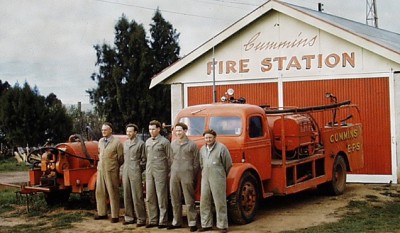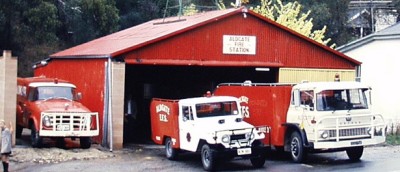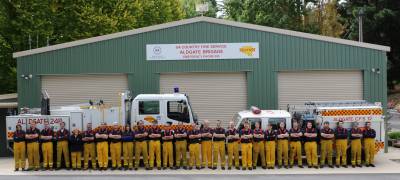
This work is licensed under a Creative Commons Attribution-ShareAlike 4.0 International License

A Short History of the SACFS

 The Country Fire Service springs from a long and complex partnership between volunteers, local government and the South Australian government to meet community safety needs.
The Country Fire Service springs from a long and complex partnership between volunteers, local government and the South Australian government to meet community safety needs.
The partnership began as an attempt to deal with fires in rural areas. In colonial times, government only attempted to control the outbreak of wildfire, by legislating against the careless use of fire, beginning with the 1847 ordinance against reckless burn-offs of stubble and grass.
District Councils, set up in 1852, were given responsibility over setting the times for burning-off and fire bans - but had no legal authority to be involved in rural fire-fighting. Local residents could band together on a one-off basis to fight each fire but there was no ongoing organisation and no authority to set backburns.
In 1913, Councils were given the right to appoint Fire Control Officers, with powers to do anything 'necessary or expedient and practicable' to prevent fires, or to protect life and property in the case of fire, or to control or extinguish a fire, including backburning.
There was a technological expansion after the First World War which revolutionised the organisation of rural firefighting - with radios, telephones, motor transport, and the knapsack spray. Rural residents, often but not always land holders, began to form into local or district fire fighting associations.
In 1933, District Councils were empowered to spend rates money on equipment for local groups. The State Government itself was just beginning to consider funding rural emergency services when the Second World War broke out and all emergency work was swept into the war effort.

As part of the war effort government-equipped volunteer Emergency Fire Service brigades were established, at first in Adelaide, and later in some country areas. After the war, equipment from these groups was lent to District Councils for rural firefighting work. To supervise the program, an Emergency Fire Services operation was formed within the Police Department. Gradually the many different local groups began to feel part of a statewide service.
From the mid-1950s, District Councils received subsidies on equipment bought for local groups. The EFS organisation grew stronger, and volunteers began to agitate for establishment as a statutory authority. This was achieved in 1976, with the passing of the Country Fires Act, setting up the Country Fire Service (CFS).
By that time, CFS work had expanded beyond rural fire control into road accident and general emergency response, especially where there was no other nearby emergency service. These responsibilities expanded further in succeeding years. Increasing awareness of environmental health brought about the expansion of CFS into the clean-up of hazardous materials. Developing technologies meant the establishment of the brigades specially trained in and equipped with Compressed Air Breathing Apparatus.

The work of the CFS had moved well beyond local fire control to become of very broad, statewide significance. Accordingly, the Country Fires Act of 1989 pulled some of the control over the CFS back from District Councils to the State Government, allowing for the development of a standardised service able to respond quickly to emergencies across South Australia. Indeed, in the 1990s, CFS volunteers and staff responded to emergencies interstate and overseas.
In the late 1990s, as part of the drive to ensure that this statewide service was properly equipped, another major change in funding was brought in, with funding being provided by the State Government through the Emergency Servies Levy - a levy imposed on all home ownders & vehicle owners. As part of that change, the administration of the CFS was combined with the administration of several other emergency services through the Emergency Services Administrative Unit (ESAU)
2005 saw another change, with the Introduction of the SA Fire & Emergency Services Act or SAFECOM Act. The SAFECOM Act replaced the Country Fires Act 1989, The South Australian Metropolitan Fires Act 1936 and the State Emergency Service Act 1989.
Under the SAFECOM Act, each service remains as a seperate entity, while sharing common administrative services.

For more information on individual brigades and their history, select 'CFS History' from the menu on the left, or click here
Portions of this infromation taken from the CFS Annual Report 1999-2000, Photographs from CFS Archives and the CFS Promotions Unit





